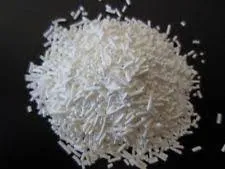
acidity regulator 330 331
Understanding Acidity Regulators E330 and E331
Acidity regulators are essential food additives that help maintain the desired pH level in various food products. Among these regulators, E330 (Citric Acid) and E331 (Sodium Citrates) are widely used in the food industry. This article will explore their functions, sources, and benefits to help you understand the significance of these additives in our daily diet.
What are Acidity Regulators?
Acidity regulators, also known as acidulants, are substances added to food to regulate acidity and alkalinity, ultimately influencing taste, texture, and shelf life. They play a crucial role in preventing spoilage, enhancing flavors, and maintaining product stability. These additives are especially common in processed foods, beverages, and dairy products.
E330 - Citric Acid
Citric Acid, denoted as E330, is a naturally occurring organic acid found in citrus fruits such as lemons, limes, and oranges. It has a sour taste and serves numerous functions in food processing.
1. Flavor Enhancement Citric acid is known for imparting a tart flavor to food products. It enhances overall taste by balancing sweetness and masking undesirable flavors.
2. Preservative Due to its antimicrobial properties, E330 helps inhibit the growth of mold, yeast, and bacteria. This attribute extends the shelf life of products, making it a popular choice in jams, jellies, and beverages.
3. pH Control Citric acid is effective in adjusting the acidity of food items. It helps maintain the desired pH level, which is crucial in products like cheese and soft drinks, ensuring they remain safe for consumption and retain their quality.
acidity regulator 330 331

4. Nutritional Benefits It also acts as a source of vitamin C, contributing to the nutritional value of food products.
E331 - Sodium Citrates
Sodium Citrates, represented as E331, are the sodium salts of citric acid. They can exist in different forms, such as monosodium citrate, disodium citrate, and trisodium citrate. Like citric acid, sodium citrates have diverse applications in the food industry.
1. Emulsifier E331 is often used as an emulsifying agent, helping maintain a consistent mix of oil and water in products like dressings, sauces, and dairy. This property ensures uniformity and prevents separation.
2. pH Stabilizer Sodium citrates play a critical role in buffering pH levels. They help stabilize the acidity in processed foods, which can enhance flavors and prolong shelf life.
3. Texture Modifier Sodium Citrates contribute to the smooth texture of dairy products and processed cheeses. They prevent coalescence and assist in achieving the desired creaminess.
4. Nutritional Aspect Sodium citrates are a source of sodium, an essential mineral needed for various bodily functions, though consumption should be moderated to avoid excess intake.
Conclusion
The additives E330 (Citric Acid) and E331 (Sodium Citrates) serve significant roles in food processing, ensuring products maintain their flavor, texture, safety, and shelf life. Their widespread use is a testament to their effectiveness and versatility. However, as with any food additive, moderation is essential. Awareness of these ingredients enriches our understanding of food science and aids in making informed dietary choices. As consumers become increasingly conscious of what they consume, appreciating the role of acidity regulators helps establish a balanced perspective on processed foods. Ensure to check ingredient labels and embrace both natural and synthetic additives in your diet for a wholesome eating experience.
-
Aluminum Hydroxide: Quality Gels & Dried Gel AntacidNewsAug.31,2025
-
Buy High-Quality Trichloroisocyanuric Acid for Sale | TCCA 90% SupplierNewsAug.30,2025
-
Pure Sodium Dichloroisocyanurate Dihydrate | Powerful DisinfectantNewsAug.29,2025
-
Industrial Chemicals: Quality & Purity for Every IndustryNewsAug.28,2025
-
Nitrile Rubber Honoring Strict Production StandardsNewsAug.22,2025
-
Aspartame Ingredients Honoring Food Safety ValuesNewsAug.22,2025
-
Fertilizer for Balanced Plant NutritionNewsAug.22,2025
Hebei Tenger Chemical Technology Co., Ltd. focuses on the chemical industry and is committed to the export service of chemical raw materials.
-

view more DiethanolisopropanolamineIn the ever-growing field of chemical solutions, diethanolisopropanolamine (DEIPA) stands out as a versatile and important compound. Due to its unique chemical structure and properties, DEIPA is of interest to various industries including construction, personal care, and agriculture. -

view more TriisopropanolamineTriisopropanolamine (TIPA) alkanol amine substance, is a kind of alcohol amine compound with amino and alcohol hydroxyl, and because of its molecules contains both amino and hydroxyl. -

view more Tetramethyl Thiuram DisulfideTetramethyl thiuram disulfide, also known as TMTD, is a white to light-yellow powder with a distinct sulfur-like odor. It is soluble in organic solvents such as benzene, acetone, and ethyl acetate, making it highly versatile for use in different formulations. TMTD is known for its excellent vulcanization acceleration properties, which makes it a key ingredient in the production of rubber products. Additionally, it acts as an effective fungicide and bactericide, making it valuable in agricultural applications. Its high purity and stability ensure consistent performance, making it a preferred choice for manufacturers across various industries.





